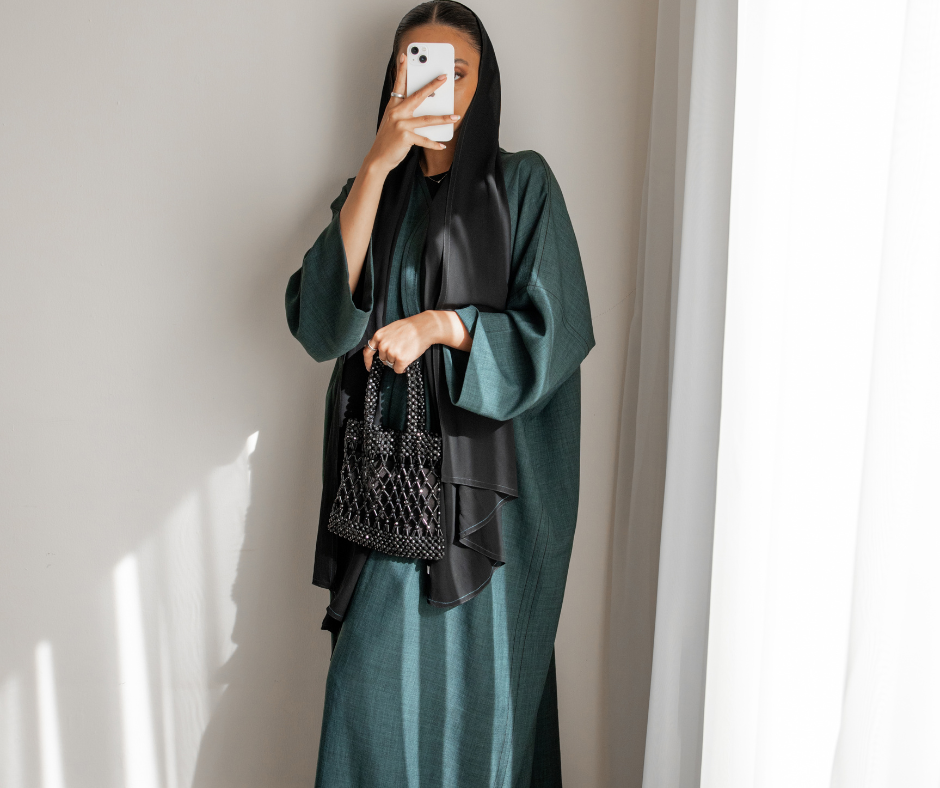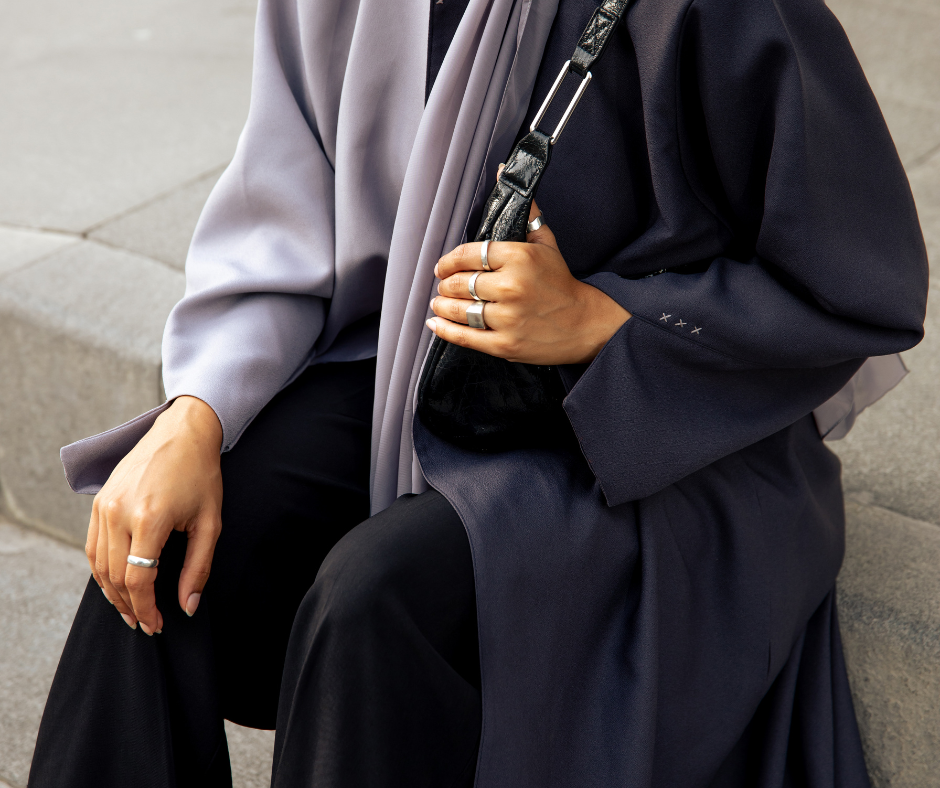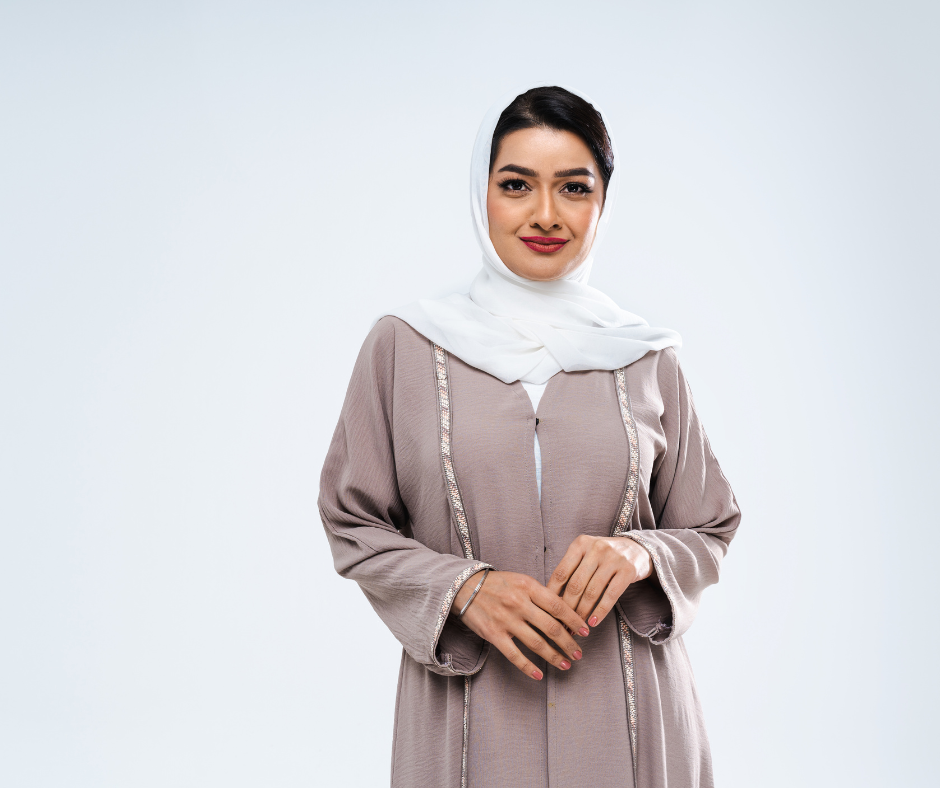Step into the world of fashion and culture as we explore the innovative journey of one of the most iconic garments in Middle Eastern tradition – the abaya. With its rich history and cultural significance, the abaya has undergone a remarkable transformation over time, blending traditional elegance with contemporary style. Join us on this captivating exploration to discover how designers are revolutionizing abaya design, modernizing this cherished attire while staying true to its roots. Get ready to be inspired by the breathtaking innovations in abaya design that are sweeping across runways and wardrobes alike! In this blog we will discuss about Innovations in Abaya Design: Modernising Traditional Attire.
Jump to a Specific Section
- 1 The Evolution of Abaya Design: From Traditional to Modern
- 2 Innovative Materials and Techniques Used in Abaya Design
- 3 Fusion of Traditional and Western Elements in Abayas
- 4 Rising Popularity and Demand for Modern Abayas
- 5 Impact on the Fashion Industry and Society
- 6 Challenges Faced by Designers in Modernising the Abaya
- 7 Future Outlook for Innovations in Abaya Design
The Evolution of Abaya Design: From Traditional to Modern
The Abaya, a traditional garment worn by women in many Muslim countries, has undergone a remarkable transformation over the years. From its humble beginnings as a simple black cloak, the Abaya has evolved into a fashion statement that blends tradition with modernity.
In the past, Abayas were primarily made of plain black fabric and had loose-fitting designs that concealed the woman’s body shape. However, with changing times and fashion trends, designers have started experimenting with different cuts and styles to create more contemporary looks.
Modern Abayas now come in various colors and patterns, allowing women to express their individuality while still adhering to cultural norms. Designers have introduced embellishments such as embroidery, sequins, beads,and lacework to add elegance and glamour to these traditional garments.
Another significant innovation in Abaya design is the use of innovative materials. Traditional fabrics like chiffon and crepe are still popular choices but are now complement by lightweight materials like silk or satin for a more luxurious feel. This not only enhances comfort but also adds versatility to the overall look of the garment.
As society becomes increasingly globalized, there is rising popularity and demand for modern abayas among Muslim women worldwide. The availability of stylish options means that wearing an abaya no longer feels restrictive or outdated; instead, it can be seen as empowering by providing an avenue for self-expression within cultural boundaries.
The impact on the fashion industry cannot be overlook either. With major international brands recognizing this growing market segment, the accessibility and variety available for customers have increased significantly. This shift towards inclusivity has not only opened new avenues for designers but has also challenged the traditional notions

Innovative Materials and Techniques Used in Abaya Design
Abayas have come a long way from their traditional origins, thanks to the use of innovative materials and techniques in their design. Designers are constantly pushing boundaries and exploring new possibilities to create unique and stylish abayas that cater to the modern woman.
One such innovation is the use of lightweight fabrics like chiffon, crepe, and silk. These materials not only add a touch of elegance but also make the abaya more comfortable to wear, especially in warmer climates. Additionally, designers are experimenting with different textures by incorporating lace or embroidery details onto these fabrics, adding depth and visual interest.
In terms of techniques used in abaya design, laser cutting has become increasingly popular. This technique allows for intricate patterns and designs to be etch onto the fabric with precision. It offers a contemporary twist on traditional geometric motifs commonly found on abayas.
Another technique gaining popularity is 3D printing. Designers can now create intricate embellishments using this technology, giving abayas a futuristic look while still maintaining cultural integrity.
Furthermore, digital printing has revolutionized how patterns are incorporate into abaya designs. This method allows for unlimited creativity as designers can experiment with an array of prints ranging from abstract geometrics to vibrant floral motifs.
These innovative materials and techniques have breathed new life into the world of abaya design. They have created opportunities for designers to explore endless possibilities while paying homage to tradition.
As demand continues to grow for modernized versions of this traditional attire, it will be interesting to see what further innovations emerge within the field of abaya design in the future!

Fusion of Traditional and Western Elements in Abayas
In the world of fashion, the fusion of traditional and Western elements has become a popular trend. This blending of different styles and influences allows for the creation of unique and innovative designs that appeal to a wide range of individuals.
When it comes to abayas, this fusion has resulted in some truly stunning creations. Designers are combining traditional Middle Eastern silhouettes with modern Western fabrics and embellishments to create abayas that are both elegant and contemporary.
One example of this fusion is the incorporation of lace into abaya designs. Lace adds a delicate and feminine touch to an otherwise modest garment, creating a beautiful contrast between old-world charm and modern aesthetics.
Another way designers are infusing Western elements into abayas is through the use of bold prints and patterns. Traditional black abayas are being replaced with vibrant colors and eye-catching motifs, allowing women to express their individuality while still maintaining cultural sensitivity.
Furthermore, we are seeing more experimentation with cuts and shapes in abaya design. The addition of asymmetrical hemlines or structured shoulders gives these garments a modern twist without compromising their modesty.
The fusion between traditional Middle Eastern attire and Western fashion is not only visually appealing but also serves as an important bridge between cultures. It allows individuals from different backgrounds to appreciate each other’s traditions while embracing diversity.
As this trend continues to gain momentum, we can expect even more exciting innovations in abaya design that blend the best elements from both worlds. Whether it’s through incorporating new materials or experimenting with unconventional silhouettes, these creations will continue pushing boundaries while honoring tradition

Rising Popularity and Demand for Modern Abayas
In recent years, there has been a noticeable surge in the popularity and demand for modern abayas. This traditional attire, once associated solely with religious significance, is now being embraced by women worldwide as a stylish fashion statement.
One of the main reasons behind this growing trend is the increasing number of designers who are incorporating innovative designs into their abaya collections. These designers are merging traditional elements with contemporary fashion trends to create unique and eye-catching pieces that appeal to a wider audience.
Social media platforms have also played a significant role in propelling the popularity of modern abayas. Influencers and bloggers from different backgrounds are showcasing their own interpretations of these garments, inspiring others to experiment with their style choices.
Moreover, celebrities both within and outside Islamic cultures have been spotted wearing modern abayas on red carpets and at high-profile events, further fueling interest in this previously niche garment.
The rising popularity of modern abayas has not only impacted the fashion industry but also society as a whole. It symbolizes an evolution in cultural norms where women can express themselves through fashion while still maintaining their religious beliefs.
However, despite its increasing acceptance, challenges remain for designers looking to modernize the abaya. Balancing tradition with innovation can be tricky as they must respect cultural sensitivities while pushing boundaries creatively. Additionally, ensuring accessibility to diverse body types remains an ongoing concern.
Despite these challenges, it is clear that innovations in abaya design have brought about positive change within the fashion industry. The future looks promising as more designers continue to push boundaries and redefine what it means to wear an abaya in today’s world.

Impact on the Fashion Industry and Society
The modernization of abaya design has had a significant impact on both the fashion industry and society as a whole. In the past, abayas were often viewed as traditional garments that were limited in their style options. However, with innovative designs and materials being introduced, abayas have now become a popular choice for women who want to express their individuality while still adhering to cultural norms.
In terms of the fashion industry, the introduction of modern abayas has opened up new avenues for designers and brands to explore. The fusion of traditional elements with Western influences has resulted in unique and diverse styles that cater to different tastes and preferences. This has not only expanded the market for abayas but also brought attention to Middle Eastern fashion on a global scale.
Furthermore, the rise in popularity of modern abayas has sparked conversations about cultural identity and diversity within society. By embracing contemporary designs while retaining its roots, the modernized abaya represents an evolution in cultural expression. It allows women to showcase their personal style while respecting their heritage.
Additionally, these innovative designs have challenged societal stereotypes regarding modest dressing by proving that one can be fashionable without compromising religious or cultural beliefs. This shift in perception has led to increased acceptance and inclusivity within communities.
The impact of innovations in abaya design extends beyond just aesthetics; it is reshaping perceptions within both the fashion industry and society at large. With each new creative venture into modernizing this traditional attire comes an opportunity for self-expression, empowerment, and appreciation for diverse cultures around us

Challenges Faced by Designers in Modernising the Abaya
Designers who seek to modernize the traditional garment known as the abaya face a unique set of challenges. One of these challenges is striking a balance between preserving the cultural essence of the abaya while incorporating contemporary elements that appeal to a wider audience.
One major obstacle designers encounter is finding innovative ways to update the silhouette and overall design without compromising its modesty and functionality. They must consider factors such as length, sleeve style, and fabric choices in order to create an abaya that meets both fashion trends and religious requirements.
Another challenge lies in sourcing materials that are not only fashionable but also suitable for creating comfortable yet stylish abayas. Designers need to find fabrics that allow for breathability, flexibility, and durability while still maintaining their aesthetic vision.
In addition, designers must navigate cultural sensitivities when experimenting with new colors or patterns for their designs. While vibrant hues and bold prints may be popular in Western fashion, they may not always be embraced within certain conservative communities where tradition reigns supreme.
Furthermore, there is often pressure on designers to keep up with rapidly changing fashion trends while staying true to the timeless elegance associated with the abaya. This balancing act requires careful consideration of contemporary styles without sacrificing its inherent gracefulness.
Market competition poses another significant challenge for designers seeking to modernize the abaya. With numerous brands vying for attention in this niche market segment, it can be difficult for designers to stand out from the crowd and make their mark.
Overcoming these challenges requires creativity, cultural sensitivity, innovation,and constant adaptation on behalf of designers striving to modernize this cherished traditional attire. By addressing these obstacles head-on, they can pave the way towards a future where modernization meets tradition seamlessly.
Future Outlook for Innovations in Abaya Design
The future of abaya design looks promising, with continued efforts to modernize and innovate this traditional attire. As the fashion industry becomes more inclusive and diverse, there is a growing demand for contemporary abayas that reflect individual style while respecting cultural heritage.
Designers are likely to further explore innovative materials and techniques to create unique and comfortable abayas. The use of sustainable fabrics, such as organic cotton or eco-friendly synthetics, may also become more prevalent in response to increasing environmental concerns.
In addition, the fusion of traditional elements with Western influences is expected to continue shaping abaya designs. This blending of styles not only appeals to younger generations but also helps bridge cultural gaps by promoting understanding and appreciation across different communities.
As social media platforms provide wider exposure for modest fashion trends around the world, we can anticipate an even greater rise in popularity for modern abayas. Influencers and designers from various cultures will play a significant role in driving this movement forward by showcasing their creative interpretations of the garment.
However, despite these exciting prospects, designers face challenges when it comes to striking a balance between innovation and preserving tradition. They must navigate cultural sensitivities while pushing boundaries within their designs.

